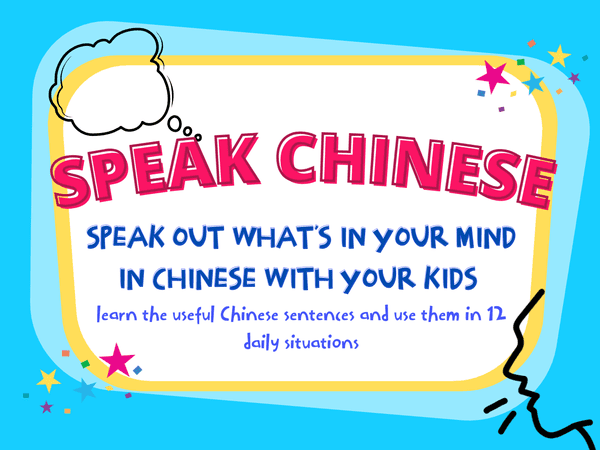
Strategies of Teaching| Learning Chinese High Frequency Characters, Just Like Teaching| Learning Sight Words

When learning English, children usually start with sight words. Sight words are a collection of common, frequently used words that a child should recognize in order to prepare for reading. The famous Dolch’s list (published in 1948 by Edward William Dolch) features 220 words. These 220 words serve as a foundation for children to improve their reading accuracy and fluency.
On the other hand, although there are over 50,000 characters altogether, a comprehensive modern Chinese dictionary normally lists 20,000 characters. An educated Chinese person knows around 8,000 characters and a person needs to know 2000-3000 characters to read a newspaper. There is no fixed list like Dolch’s list in Chinese, but there are top commonly used characters.
To some extent, high frequency Chinese characters and similar to the sight words. We can adopt similar strategies of teaching | learning these commonly used characters, just like sight words.
Just like sight words, high frequency Chinese character acquisition is an important blocks in the construction of a child’s ability to read Chinese. Setting aside time to help your child learn these words is integral to the development of their reading skills.
[Tweet “Just like sight words, high frequency Chinese character acquisition is an important blocks in the construction of a child’s ability to read Chinese. @Chinese4kids”]
How to Teach Chinese High Frequency Characters?
Make a Teaching Plan
a. Make lists of characters
Choose the characters you would like to teach. The Top 100 Commonly Used Chinese Character List is a good list to start with. Also, consider the characters that are most common in texts geared towards your child’s age and make a list of them accordingly.
b. Plan individual lessons
The objective of each lesson should be 3-5 characters. At the beginning of the lesson, a review of the characters learned in the previous lesson is necessary. It is important to repeat the characters so to ensure that the lesson has been really learned. It is better to master a few characters than a weak knowledge of many.
c. Track the progress
Track your child’s progress over the course of the year. You can use a calendar and a complete list of the characters you child has learned and is about to learn. Mark the progress with marker or stickers (the younger kids love stickers)! Tracking gives you an overview of your child’s progress and helps you to plan your lessons.
Use Proven Teaching Methods
a. “See and Say” method
One well-used method in introducing new sight words is “see and say” method. It can be also used in teaching Chinese characters.
The parent or teacher holds a flash card with the new character and has the child repeat the word multiple times while looking at the flash cards (some experts say 7 times). The cards have to be held at the child’s eye level. The child can point to the character while reading it. This method allows the children to use both their visual and auditory senses so to better retain the memory.
b. “Air writing” and “table writing” technique
Both “air writing” and “table writing” are similar techniques which ask the children to trace the character in the air or on the table surface. The physical act of writing a character helps a child register it cognitively. It further helps retain it in their memory. Help your child repeat these steps; eventually your child will be able to write the character without looking at the flash cards.
c. Practice in Context
Recognition the characters should transfer to reading them in a full text. Making connection between characters and their meaning is really important; reading the characters in context can help children establish the connection. You can ask your child to identify characters in an age-appropriate book. You can also ask your child to circle the characters in a sentence you read to them.
Make the learning Process Fun
a. Use Images
Visual aids usually help children learn. Images help children see the link between the characters and what they represent. Colorful images stimulates the brain with pattern recognition. You can either get some flash cards with pictures and/or the corresponding characters, or ask your child to draw a picture for the character (you may be amazed by your child’s view of the character).
b. Use Music
It has been proven that music help stimulate the brain. It is a great aid for the learning in general. Use music as background can greatly improve the learning experience.
c. Use Games
There are several games we can use to “play” with the characters.
Wordo is one of them. This is the word version of Bingo. Instead of numbers, children are given characters. Once a character is drawn from the pool, the child with the character can put it down on the board. Whoever find all the characters first wins.
Memory Game is another game children enjoy. What you need is two sets of character flash cards. Lay them down on the table and try to match them as quickly as possible. You can introduce a variation by having a set of characters and another set of images and ask the child to match them.
If you like this post, PIN IT!

Related Resources:
Top 100 Commonly Used Chinese Characters
You may also be interested:
- How to Learn New Chinese Vocabulary – These 5 Tips Can Help
- Use Chunking to Increase Chinese Vocabulary Efficiently and Effectively
- A Brief Introduction to Chinese Characters
- Strategies of Teaching| Learning Chinese High Frequency Characters, Just Like Teaching| Learning Sight Words
- 6 Reasons You Should Learn Chinese Characters
- Chinese Character Writing Workbook Bundle
You May Also Be Interested:
- Chinese4kids Membership – a portal for busy Chinese teachers and parents
- Chinese learning flashcards Hive – a flashcards library that with regular additions of new quality Chinese learning flashcards
- Chinese learning worksheets collection – Also a part of Chinese4kids membership, this collection is for teachers and parents who want to have access to engaging worksheets and activity sheets created for kids learning Mandarin Chinese as an additional language
- Speak Chinese with Kids Course
You May Also Be Interested:
- Chinese4kids Membership – a portal for busy Chinese teachers and parents
- Chinese learning flashcards Hive – a flashcards library that with regular additions of new quality Chinese learning flashcards
- Chinese learning worksheets collection – Also a part of Chinese4kids membership, this collection is for teachers and parents who want to have access to engaging worksheets and activity sheets created for kids learning Mandarin Chinese as an additional language
- Speak Chinese with Kids Course
- Chinese Vocabulary Made Easy Course
Recent Posts
Join Our Membership
Enroll to A Course
Buy An eBOOK
Our Posts



















